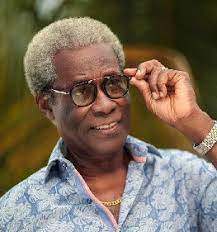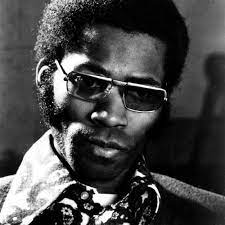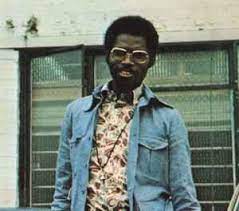Robert Livingstone Thompson
David Livingstone is a British Jamaican reggae musician and producer. His most well known hits are his 1972 Suzanne Beware of the Devil and Rudy, A Message to You.
1943
Kingston, Jamaica
Parents are from Jamaica
Usually list of achievements/ important moments/ items in their life alongside dates
1964 – Released his first single One Man Went To Mow under Carnival Records
1964 -His single What A Life sold 25,000 copies
1967 – Signed with Ska Beat
1967 – He released Rudy A Message to You which entered the top 50 and realised total sales of 30,000 units
1968 – Livingstone moved behind the scenes and began producing songs for Audrey Hall.
1968 – Signed by Trojan Records and used two of his albums for their first ever album catalogue
1969- His single Reggae in Your Jeggae gained attention
1970 – Raining in My Heart sold more than 130,000 units
1972: Suzanne Beware of the Devil made great success
1973 – Big City climbed to a respectable number 27 on the record charts
1973 – Aligned with Mooncrest Records and released Black Star and All Strung Out On You Furthermore, he recorded the full length album Conscious
Dandy Livingstone was born in Kingston, Jamaica on 14 December 1943 and was raised in St Andrew before emigrating to England to join his parents in 1959. After Livingstone completed his studies in London, he enrolled for an apprenticeship program for tool making at an engineering college.
Music was amongst Livingstone’s family; he was a cousin of the singer Ansel Collin. However, his real interest in music was sparked in 1963 by a piano playing friend, Floyd. He and Floyd had been playing and creating music in a building in West London and a nearby tenant recorded some of Livingstone’s vocals and released some of these tracks on the Planetone record label, without Floyd knowing. The owner of the building was Lee Gopthal, an executive at Trojan Records. In 1964 Gopthal referred Livingstone to Carnival Records, a startup label being launched by Cross Bown 1964. Livingstone then answered a call from Carnival Record in 1964 for a reggae vocal duo and double tracked his own voice on a demo single What a Life, which sold 25,000 units. It became a respectable hit for Livingstone and it is still accredited to an imaginary duo called Sugar and Dandy. Livingstone maintained the notion of a duo by doing live performances with a singer named Roy Smith. However, this partnership was brief and he later teamed up with Tito ‘Sugar’ Simone. Whilst Simone was a soloist in his own right, his single Oh Lawdy Miss Clawdy was released in 1964 as a B side of Livingstone’s Carnival single Vipers.
Livingstone continued his singer career alongside his studies. In 1967 he signed with Ska Beat Records. Ska Beat Records managed a number of successful artists like the Wailers, Don Drummond and Baba Brooks and Livingstone contributed to the label’s growth. Soon after making the deal, Livingstone released a long playing vinyl disc for Ska Beat, Rocksteady with Dandy, calling himself Dandy & His Group.
Livingstone’s single in 1967 Rudy A Message to You entered the top 50 and had a total sale of 30,000 units. After this single Livingstone began producing songs for Audrey Hall and joined a client on a duo billing called Dandy and Audrey. They recorded several singles and also an album I Need You in 1969 and a follow up album in 1970. Further Livingstone productions of that era included The Marvels’ self titled debut album, a Nicky Thomas hit Suzanne Beware of the Devil and Red Red Wine, which was a 1969 chart hit for Tony Tribe.
As Livingstone’s popularity grew, Trojan Records signed the singer in 1968 and used two Livingstone albums Follow That Donkey and Dandy Returns to launch its first ever album catalogue. These albums were credited to yet another Livingstone pseudogroup, called Dandy & The Brother Dan All Stars. Trojan then authorised Gopthal to establish Down Town Records, which was a new label created to spotlighting Livingstone, both as a solo artist and as a producer. Among Livingstone’s early Down Town hits was a 1968 single named for a traditional Jamaican adage Move Your Mule. Livingstone quickly gained attention with Reggae in Your Jeggae 1969 and Raining in My Heart 1970 which sold over 130, 000 units. He also had successes with I’m Your Puppet 1969. The single Take a Letter Maria failed however to chart in 1970. Likewise, the second Dandy and Audrey album Morning Side of the Mountain proved disappointing, causing Livingstone to return to Jamaica on sabbatical.
Livingstone took a break from music for a while and whilst still in hiatus in 1972, he recorded Big City and his own version of Suzanne Beware of the Devil and then returned to England. Suzanne Beware of the Devil which was released as a single on Horse in 1972 was a big hit and it later served as the title track on a Trojan compilation album in 2002. Big City appeared on Horse in 1973, and the record charted, climbing to a respectable number 27.
In 1973, he aligned with Mooncrest Records and released a very personal composition called Black Star as a double sided single with All Strung Out On You. Livingstone also recorded the full length album Conscious. This album reflected his perception of the status of black men in society, particularly those from the West Indies. Both Black Star and the Mooncrest debut album are often seen as his finest works. Back in Britain he recorded eleven tracks at Byron Lee’s Dynamic studio, releasing a self-titled album in 1973. A reprise of Suzanne Beware Of The Devil broke into the
British charts at number 14 in 1972. Big City, released as a single in 1973, made strides as well.
Livingstone attracted a diverse fan base, appealing to ska enthusiasts as well as the punk fused 2tone ska revivalists of the 1980s and also the skinhead movement, which raised Suzanne Beware of the Devil to anthemic status.
G. Cooksey, ‘Dandy Livingstone Biography’, Musician Biographies
(Musician Guide, revised 2022) [accessed 4 February 2022]
Trojan Records, “Artist of the Month- Dandy Livingstone,” Trojan Records
(Trojan Records, 2002)
[accessed 4 February 2022]




